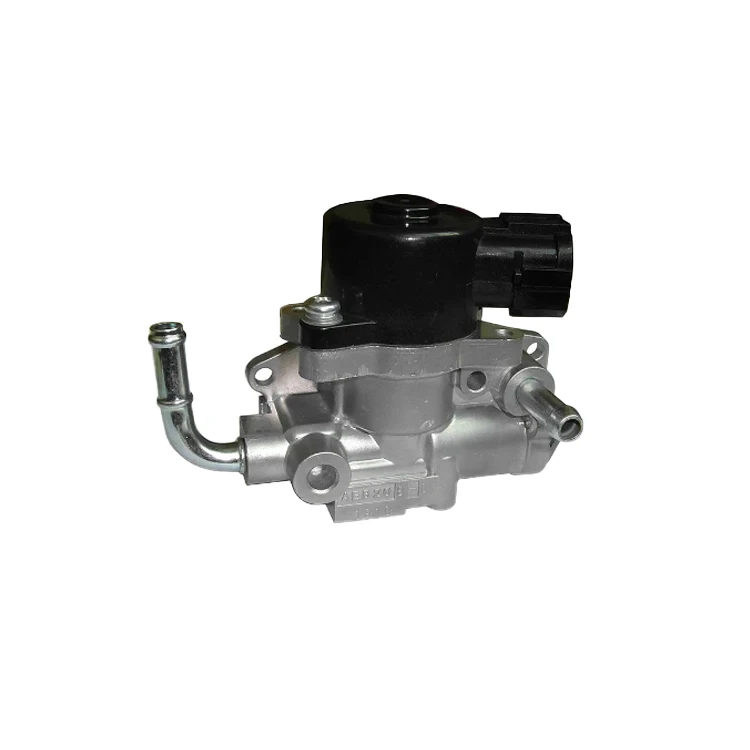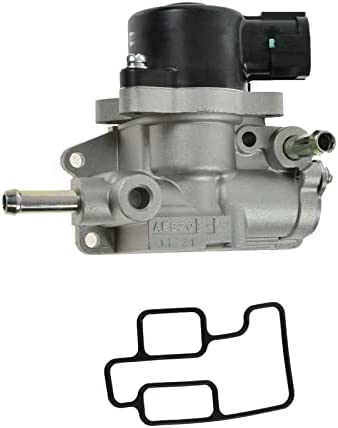The cost to clean an idle air control valve will vary depending on the make and model of your vehicle. However, most mechanics will charge between $75 and $150 for this service.
When it comes to your car, you want to make sure that everything is running smoothly. That’s why it’s important to keep up with regular maintenance, like getting your oil changed or checking your tire pressure. One thing you might not think about as often is your idle air control valve (IACV).
But what exactly is an IACV? It’s a valve that helps regulate the amount of air flowing into your engine, which in turn affects the engine’s idle speed. So if your IACV gets dirty or clogged, it can cause your engine to idle erratically or even stall.
Cleaning your IACV is generally a pretty straightforward process and shouldn’t cost too much money. However, if you don’t feel comfortable doing it yourself, you can always take it to a mechanic or dealership and they can take care of it for you.
Either way, keeping your IACV clean is an important part of maintaining your car and ensuring that it runs smoothly for years to come!
How to Fix a Car that Idles Poorly (Rough Idle)
Can a Idle Air Control Valve Be Cleaned?
Yes, an idle air control valve (IACV) can be cleaned. The IACV is responsible for regulating the amount of air that bypasses the throttle plate in order to maintain a consistent engine idle speed. Over time, the IACV can become gummed up with dirt and debris, which can cause it to stick or not function properly.
Cleaning the IACV is a fairly simple process. First, disconnect the negative battery terminal to prevent any electrical shorts. Next, locate the IACV and remove its mounting bolts.
Be careful not to drop anything into the engine! With the IACV removed, you can clean it with brake cleaner or carburetor cleaner. Use a small brush to remove any stubborn dirt or grime.
Once it’s clean, reinstall it and reconnect the negative battery terminal. Start the engine and check for proper idle operation.
What are the Symptoms of a Failing Idle Air Control Valve?
When a car’s idle air control valve is failing, there are a few tell-tale symptoms that will let you know something is wrong. The most common symptom is that the car will have difficulty starting. If the valve is only slightly damaged, the car may start but then stall soon after.
Another common symptom of a failing idle air control valve is irregular or unstable idle speeds. The car may also exhibit strange surging at low speeds or when idling. These are all caused by the engine not getting enough air and consequently running too lean.
In severe cases, a failing idle air control valve can cause the engine to stall while driving.
Can I Drive With a Failing Idle Air Control Valve?
If your car’s idle air control valve is failing, it’s best to not drive it. The idle air control valve regulates the amount of air that flows into the engine when the car is idling. If it’s not working properly, too much or too little air can flow into the engine, which can cause stalling and other issues.
How Long Do Idle Air Control Valves Last?
An idle air control valve, also called an idle speed control valve, is a device found on many vehicles that regulates the engine’s idling speed. This valve is usually located in the throttle body, and is controlled by the vehicle’s computer. The computer constantly adjusts the valve to maintain a consistent engine speed, regardless of load or temperature changes.
The lifespan of an idle air control valve can vary depending on the quality of the part and the conditions it operates in. In general, however, most valves will last for the lifetime of the vehicle with proper maintenance. Over time, deposits can build up on the valve or its seat, which can eventually cause it to stick or fail.
If this happens, the engine may stall or run erratically at idle. Cleaning or replacing a dirty or failed idle air control valve is usually a simple and inexpensive repair.

Credit: www.alibaba.com
How to Clean Idle Air Control Valve Without Removing
If you have a dirty idle air control valve, it can lead to all sorts of engine performance problems. The IACV is responsible for regulating the amount of air that bypasses the throttle when the engine is idling. If it gets dirty, it can cause the engine to stall, run rough, or even fail to start.
Luckily, cleaning an idle air control valve is a pretty simple job that doesn’t require removing the valve from the engine.
Here’s what you’ll need:
– A can of compressed air
– A small brush (toothbrush or similar)
– Cleaning solvent (brake cleaner works well)
– Lint-free cloths (or paper towels)
– optional: safety goggles and gloves
Using compressed air, blow any loose dirt and debris out of the IACV housing. Be careful not to put too much pressure on the housing, as this could damage it.
Next, using the small brush and some cleaning solvent, scrub away any stubborn dirt or build-up on both the inside and outside of the housing. Once you’re satisfied that everything is clean, use a lint-free cloth (or paper towel) to dry off both the inside and outside of the housing. At this point you can reattach the IACV to your engine and enjoy improved engine performance!
Idle Air Control Valve Replacement Cost
The idle air control valve is an important part of your car’s engine management system. It is responsible for regulating the amount of air that flows into the engine when the throttle is closed. If the idle air control valve fails, it can cause a number of problems, including stalling, poor fuel economy, and rough idling.
Replacing an idle air control valve is not a difficult job, but it can be expensive. The average cost for an idle air control valve replacement is between $200 and $400. This includes the cost of parts and labor.
If you have to replace more than one idle air control valve, the costs can add up quickly.
If your car is having any of these symptoms, it may be time to replace your idle air control valve:
-Rough idling
-Stalling at stoplights or stop signs
-Poor fuel economy
Driving With a Bad Idle Air Control Valve
The idle air control valve is an important part of a car’s engine. It is responsible for regulating the amount of air that flows into the engine, and it can become clogged or damaged over time. If your idle air control valve is not working properly, it can cause your car to stall or have difficulty starting.
In some cases, it can also cause your car to idles erratically or rough.
If you think that your idle air control valve may be having issues, there are a few things that you can do to troubleshoot the problem. First, check the vacuum hose that connects to the valve.
Make sure that there are no leaks in the hose, as this can cause problems with the valve’s operation. Next, clean out the idle air control valve itself. You can do this by removing it from the engine and spraying it with carburetor cleaner.
Be sure to reattach the vacuum hose before putting the valve back in place.
If cleaning out the valve does not solve the problem, then you may need to replace it entirely. This is a relatively simple process, but it is best to leave it to a professional if you are not comfortable doing it yourself.
In most cases, replacing the idle air control valve will resolve any issues that you are having with your car’s engine performance.
Idle Air Control Valve Symptoms
The idle air control valve is an important component of your car’s engine. It is responsible for regulating the amount of air that enters the engine when the car is idling. If the idle air control valve is not working properly, it can cause a variety of problems, including a rough idle, poor fuel economy, and stalling.
If you notice any of these symptoms, it’s important to have the problem diagnosed and repaired as soon as possible. Ignoring the problem could lead to more serious engine damage.
Idle Air Control Valve Cleaner
What is an Idle Air Control Valve?
An idle air control valve (IACV) regulates the amount of air that bypasses the throttle plate in an internal combustion engine. It is a mechanical or electronic device that is used to maintain engine speed at idle.
How does an IACV work?
The IACV modulates airflow through the throttle body to control engine speed. It does this by opening and closing a passageway that bypasses the throttle plate.
The amount of airflow is controlled by the position of the IACV, which is regulated by an electric motor. When the engine is idling, the IACV closes the passageway so that little air can bypass the throttle plate. This increases engine speed because less air means more fuel is needed to maintain combustion.
As load on the engine increases, such as when you are driving up a hill, the IACV opens the passageway to allow more air to bypass the throttle plate and maintain a constant engine speed.
Why do you need to clean your IACV?
Cleaning your IACV is important because over time it can become clogged with carbon deposits from exhaust gases.
This can cause it to stick in one position and not modulate airflow properly, leading toengine stalls or poor idling. You may notice your check engine light comes on if your IACV needs cleaning.
What Happens When the Idle Air Control Valve Goes Bad
If your car has an idle air control valve, it is responsible for maintaining the engine’s idle speed. The IACV is a computer-controlled valve that regulates the amount of air bypassing the throttle plate. When the IACV goes bad, it can cause a number of problems with your car’s engine.
One of the most common symptoms of a faulty IACV is an irregular idle speed. If your car’s idle speed fluctuates or is higher than normal, it’s likely that the IACV is to blame. A bad IACV can also cause your car to stall when coming to a stop or idling in traffic.
In some cases, a failing IACV can even prevent your car from starting.
If you suspect that your IACV may be going bad, it’s important to have it checked out by a professional as soon as possible. A faulty IACV can cause serious damage to your engine if left unchecked.
Idle Air Control Valve Location
An idle air control valve, also called an idle speed control valve, is a device found on many modern vehicles that helps regulate the engine’s idle speed. The IACV is typically located near the throttle body of the intake manifold and is controlled by the engine computer.
The IACV allows the engine to maintain a consistent idle speed by regulating the amount of air that bypasses the throttle plate when the throttle is closed.
By controlling the airflow around the closed throttle, the IACV can help keep the engine running smoothly at low speeds.
If your vehicle’s idle speed seems erratic or if it stalls frequently, it may be time to clean or replace your IACV. A faulty IACV can cause all sorts of drivability issues, so it’s important to keep it in good working condition.
Idle Air Control Valve Test
An idle air control valve (IAC) is a device used to regulate the engine idle speed in an internal combustion engine. The IAC is typically a motorized actuator that is controlled by the electronic control unit (ECU). The ECU commands the IAC to open or close based on inputs from various sensors in order to maintain the correct engine idle speed.
The IAC can become dirty or damaged over time, which can cause it to stick in the closed or open position. This can result in an erratic or high engine idle speed. In some cases, it may even cause the engine to stall.
Fortunately, there is a simple test that you can do at home to see if your IAC is working properly. All you need is a multimeter and a few minutes of time.
First, locate the IAC on your engine.
It will be mounted on or near the throttle body assembly. Once you have found it, disconnect the electrical connector and remove any bolts that are holding it in place.
Next, use your multimeter to test for continuity between the two terminals on the IAC connector.
If there is continuity, then the IAC is most likely good and does not need to be replaced. However, if there is no continuity then the IAC should be replaced.
Conclusion
The average cost to clean an idle air control valve is between $50 and $200. The cost will depend on the make and model of your car, as well as the severity of the build-up. If you have a lot of build-up, it may be necessary to replace the valve, which can cost up to $1,000.

